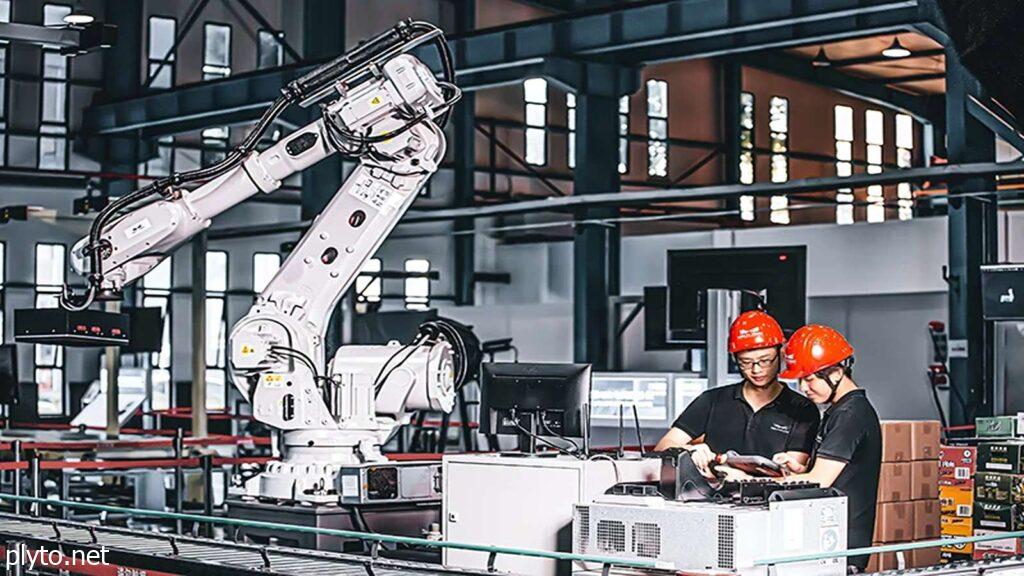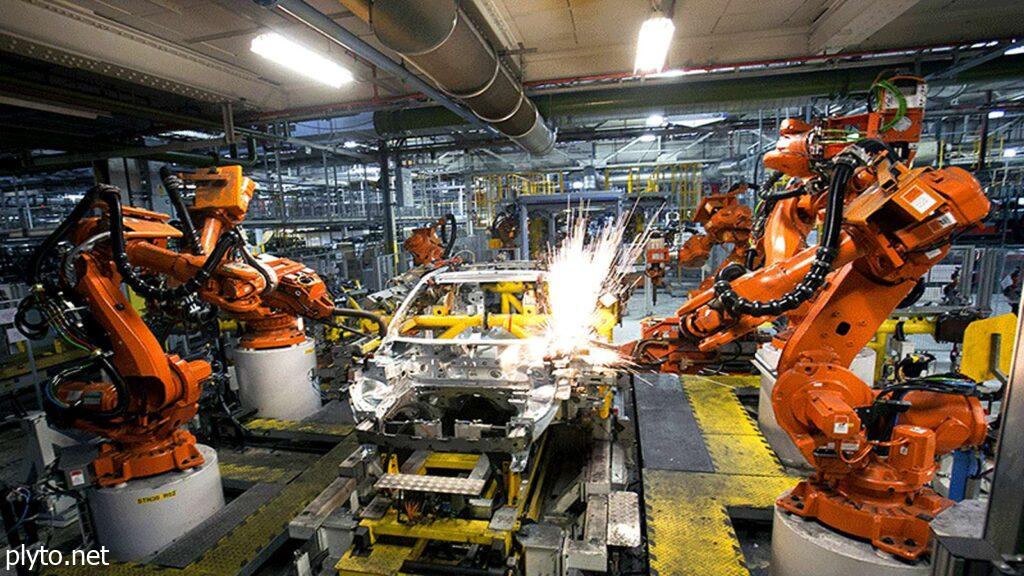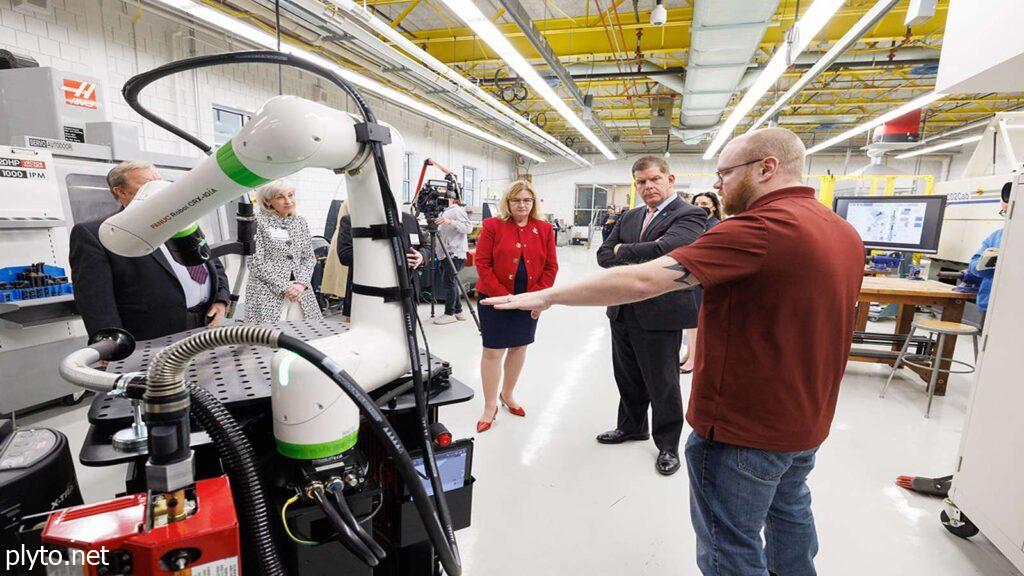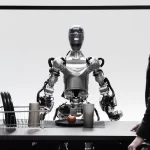Imagine a world where robots work alongside humans, seamlessly handling repetitive, precise, and physically demanding tasks. For South Korea, this scenario is already a reality. According to the World Robotics 2024 Report by the International Federation of Robotics (IFR), robots now make up over 10% of the country’s workforce. With an astounding 1,012 robots per 10,000 employees, South Korea leads the global robotic workforce race, setting a benchmark for technological innovation and economic strategy.
This achievement not only highlights the nation’s technological advancements but also reflects its proactive approach to tackling demographic and economic challenges. In this article, we’ll delve into the factors propelling South Korea to the forefront of automation, compare its progress to global competitors, and explore the opportunities and challenges posed by a robotic workforce.


The Rise of the Robotic Workforce in South Korea
Why South Korea is Leading
South Korea’s leadership in automation stems from deliberate investments, innovative policies, and a strong focus on future-ready industries.
- High-Tech Manufacturing Excellence
South Korea’s globally recognized industrial giants, such as Samsung and Hyundai, have embraced robotics to maintain their competitive edge. Robots are integral to manufacturing semiconductors, electronics, and automobiles—industries where precision, speed, and efficiency are critical. Robotics ensures consistent quality in these sectors, which are vital to South Korea’s economy. - Proactive Government Support
The South Korean government has been a pivotal player in fostering automation. By introducing tax incentives, grants, and funding for robotics research and development (R&D), it has created an ecosystem conducive to technological growth. Policies aimed at encouraging small- and medium-sized enterprises (SMEs) to adopt robotics ensure that innovation is widespread and not limited to large corporations. - Demographic Challenges
With one of the lowest birth rates globally and an aging population, South Korea faces significant labor shortages. To fill this gap, businesses have turned to robotics to take over roles that are physically demanding, repetitive, or unattractive to human workers. This shift addresses labor shortages while ensuring uninterrupted productivity.
Impressive Growth Statistics
- Robot Density: With 1,012 robots per 10,000 employees, South Korea’s robot density is over 2.5 times the global average.
- Annual Growth: The country has achieved a consistent 5% increase in robot adoption annually since 2018, demonstrating its long-term commitment to automation.
- Global Standing: South Korea has remained the top global leader in robotic density, outpacing both developed and emerging economies.
Global Comparisons: South Korea vs. the World
While South Korea leads the robotic revolution, other nations are rapidly advancing their automation capabilities.
Top Automated Countries
- Singapore
Singapore ranks second, with 770 robots per 10,000 employees. Its success is driven by a strong focus on electronics manufacturing and government-backed automation programs. - China
China has experienced an extraordinary surge in robotic adoption, climbing to third place globally with 470 robots per 10,000 employees. Its robot density has increased nearly fivefold since 2017, as the nation modernizes its manufacturing industry to reduce reliance on manual labor and improve efficiency. - Germany and Japan
These industrial powerhouses rank fourth and fifth, with 429 and 419 robots per 10,000 employees, respectively. Robotics plays a vital role in their automotive and engineering sectors.
The United States
Ranked 10th globally, the U.S. has 295 robots per 10,000 employees. While lagging behind its Asian and European counterparts, the U.S. has seen steady growth in automation, particularly in industries such as automotive and electronics. The 4.2% annual increase in robot density indicates a growing adoption of robotics across North America.
Regional Insights: Europe and Asia’s Role in Automation
- Europe: The European Union averages 219 robots per 10,000 employees, with Germany, Sweden, and Denmark leading in robot density. Many European nations prioritize automation to strengthen their manufacturing sectors and remain competitive globally.
- Asia: Asia boasts an average of 182 robots per 10,000 employees, largely driven by South Korea, Japan, and China. With a 7.6% annual growth rate, Asia remains the fastest-growing region in automation.


The Benefits and Challenges of a Robotic Workforce
Benefits of Automation
- Enhanced Productivity
Robots excel in tasks requiring precision and consistency, leading to higher productivity and fewer errors in manufacturing processes. The Tesla Optimus robot highlight how robots are evolving to not only assist humans but potentially replace certain roles in the future - Cost Efficiency
Although initial investments in robotics are significant, they often yield substantial long-term savings by reducing labor costs and increasing efficiency. - Global Competitiveness
Automation allows countries to produce high-quality goods at lower costs, strengthening their positions in global trade.
Challenges of Automation
- Job Displacement
As robots take over repetitive tasks, certain low-skill jobs become obsolete, raising concerns about unemployment in specific sectors. - Skill Gaps
The rise of robotics demands a workforce proficient in operating and maintaining these technologies, creating a need for reskilling and upskilling programs. - Economic Inequality
Nations that lag in automation adoption risk falling behind economically, exacerbating inequalities between advanced and developing economies. As robotics and AI become more pervasive, addressing ethical considerations—like those discussed in OpenAI’s vision for AI morality—becomes essential for ensuring equitable and fair adoption of these technologies
The Future of Robotics in the Workforce
The global robotics market is on an upward trajectory, valued at $9.6 billion in 2024 and projected to reach $36.1 billion by 2030. Innovations in artificial intelligence (AI) and collaborative robots (cobots) are reshaping industries, enabling robots to work in dynamic roles alongside humans.
In South Korea, robotics is expanding beyond factories into areas such as:
- Healthcare: Robots assist with elderly care, patient rehabilitation, and surgical procedures.
- Logistics: Automated systems streamline supply chains, improving efficiency and accuracy.
- Education and Research: Robotics is becoming a focal point in educational institutions, preparing the next generation for the automation era.
As South Korea continues to innovate, other nations are taking cues from its success, integrating robotics into their economies at varying paces.


Conclusion
South Korea’s robotic workforce exemplifies how automation can transform industries and address pressing challenges, such as labor shortages and economic competitiveness. By fostering a culture of innovation and investing in future-ready industries, South Korea has set a precedent for how nations can navigate the automation era.
However, as robotics becomes an integral part of the global economy, it’s essential to balance progress with social responsibility. Reskilling workers, addressing job displacement, and ensuring equitable access to technology are critical steps in creating a sustainable and inclusive future.
As the automation race accelerates, South Korea stands as a beacon of what’s possible—a future where humans and robots collaborate to unlock unprecedented levels of productivity and innovation.

















